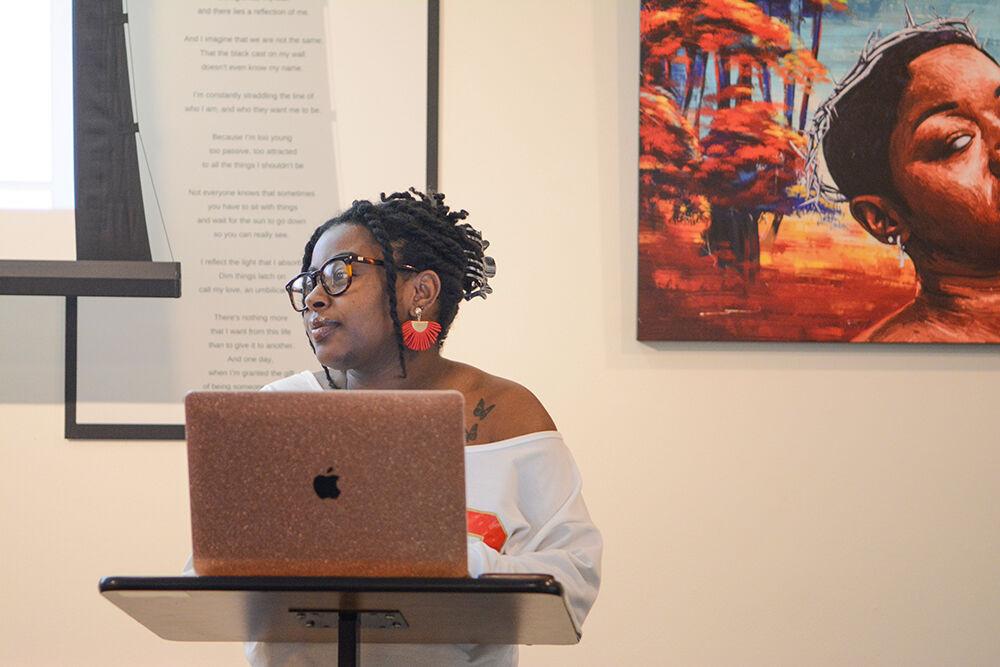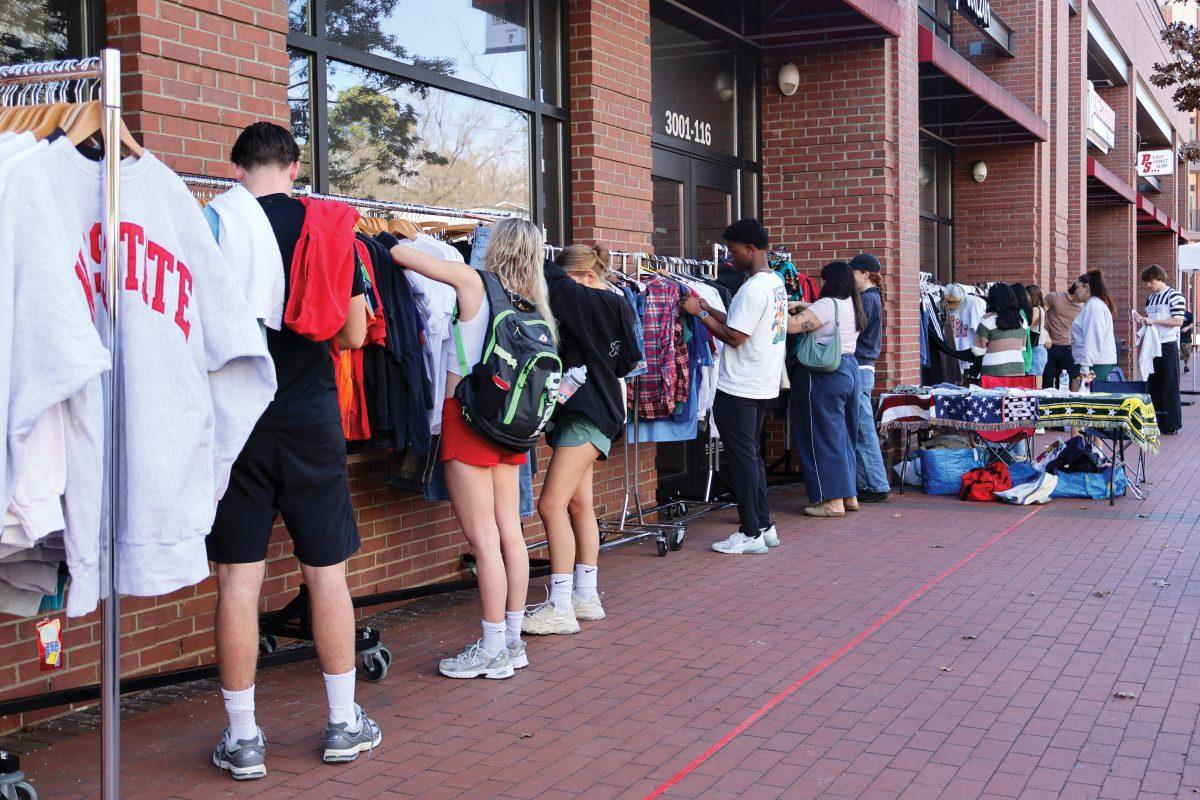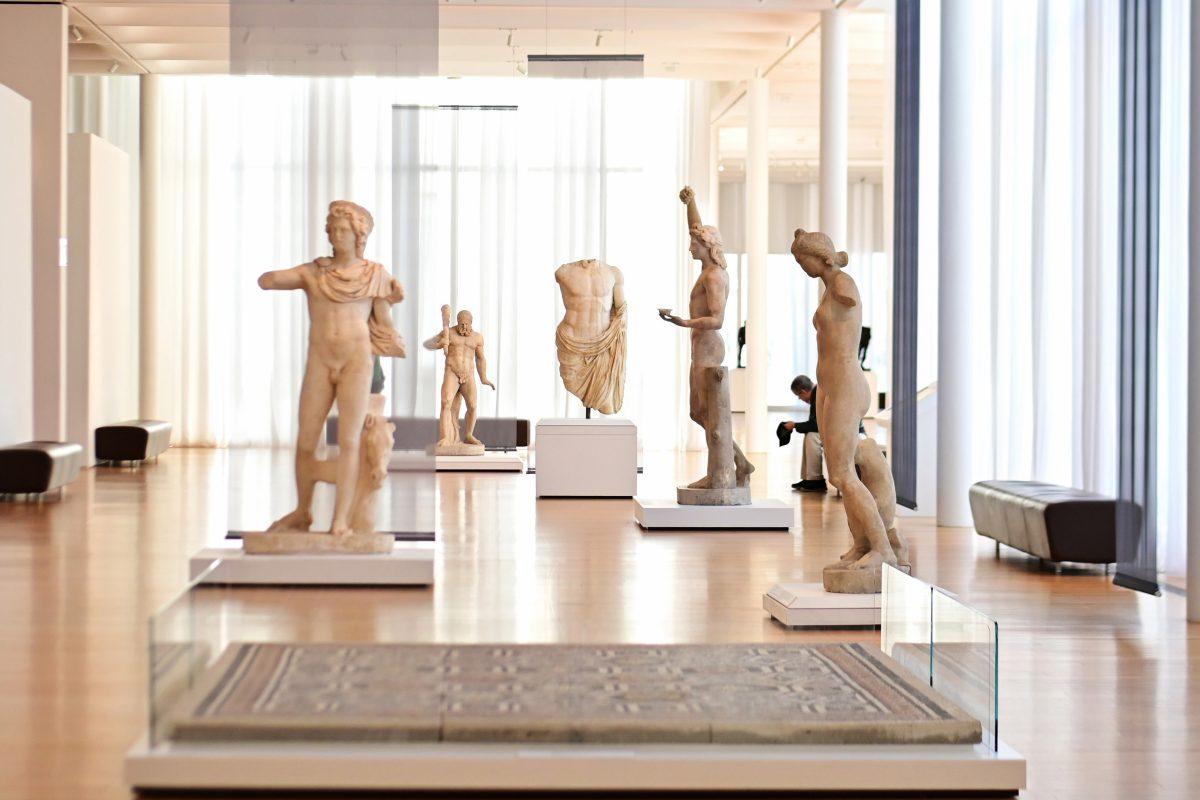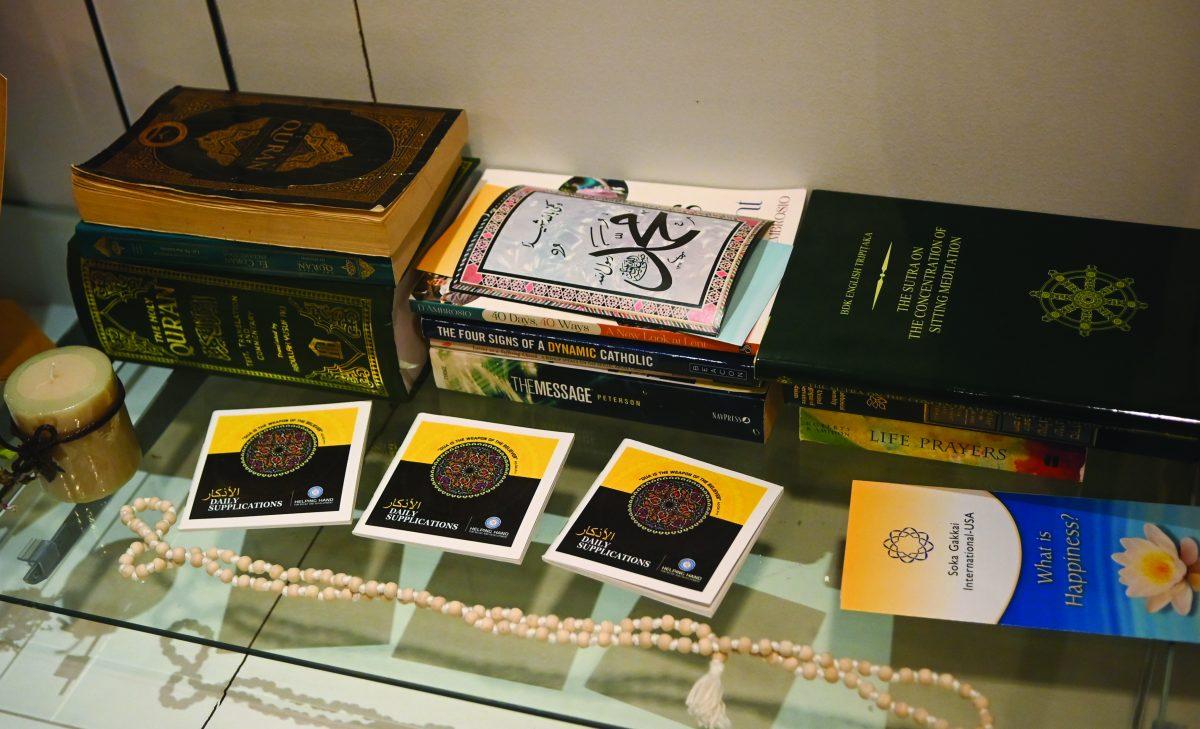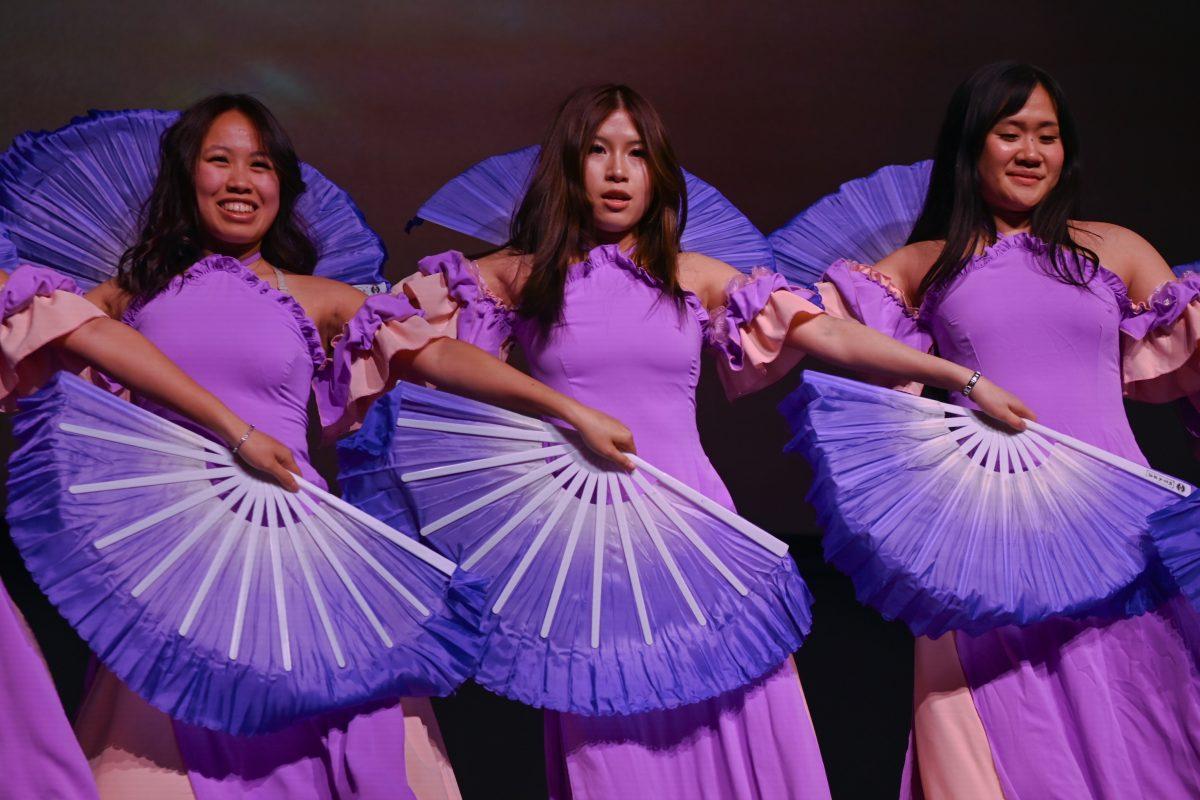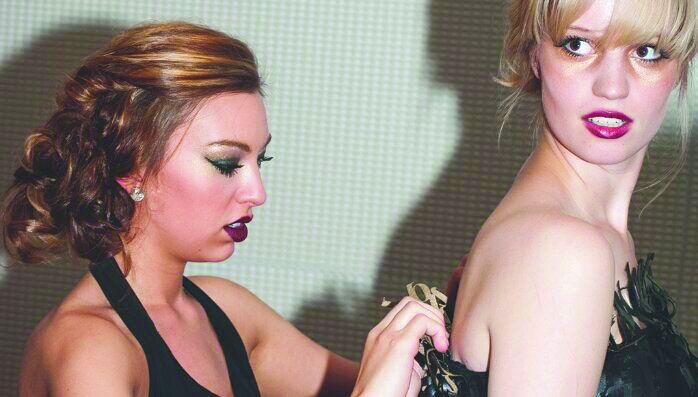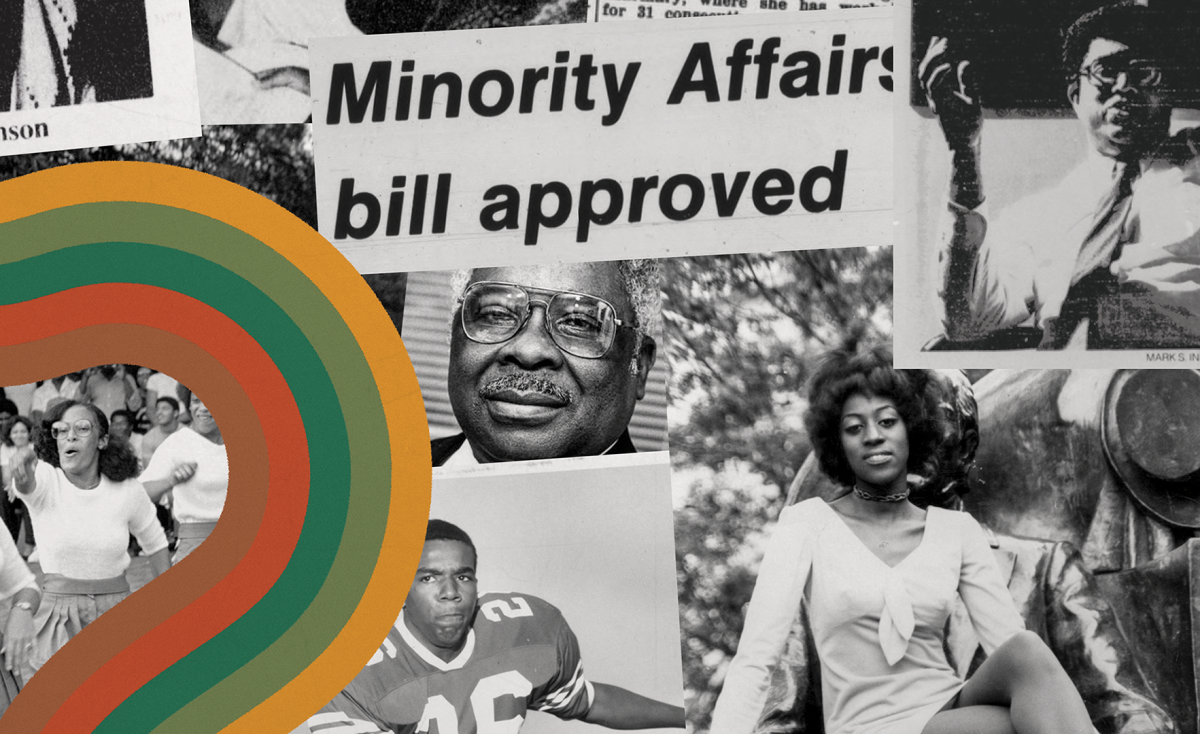A new art exhibition at the African American Cultural Center (AACC), “HerBlackHand: A Conversational Piece,” featuring poems by artist Alexis Lawson and art from a collection of local artists, will be open until Oct. 10 in Witherspoon Student Center.
“HerBlackHand: A Conversational Piece” explores the things people experience but never seem to speak of, whether that be because of location, fear or situation.
“This is really an exhibit that explores the molding, the shaping and the refining of a Black woman, who is me — the true conversational piece,” Lawson said.
Working together with Isaiah Lucas, the program coordinator of the AACC, Lawson made a gallery that allows for Black students at NC State to connect with each other and come together through shared experiences.
“It’s another space for students to be unapologetically Black,” Lucas said. “To learn their Blackness, to connect with people who look like them, who have similar experiences to them and to celebrate Black womanhood.”
The conversational aspect is something everyone can relate to, even if they don’t realize it. The 13 poems in the exhibit reflect the idea that everything we say or do is a conversation, even if it’s not said out loud.
“You always leave something with somebody,” Lawson said. “So that’s something that I really wanted to make known.”
Lucas was immediately impressed by Lawson’s work because of its impact. Being an outside of the box thinker himself, he knew he wanted to include her work in the AACC’s next gallery.
“You don’t always see poetry and art exhibitions because some people will say that poetry is art, but not art that can be displayed in an exhibit,” Lucas said. “I wanted to challenge that notion.”
Each of these poems has a corresponding art piece to go with it. Each piece was created by a local Black artist, some even being NC State students. Providing a platform for Black artists to show their talent was important to both Lawson and Lucas in the making of the gallery.
“This was an opportunity for us to create spaces and create platforms for Black artists to be showcased,” Lucas said.
Lawson and Lucas were committed to display Black artists and their experiences with Black womanhood. Because of this, they were able to showcase every artist that submitted work.
“The AACC is opening doors for people,” Lucas said. “It’s creating platforms for Black creators, and we provide access to marginalized and minoritized groups that might not have had it before.”
One of the artists whose work is included in the exhibit is Lawson’s own brother. The image of a Black anime character doesn’t necessarily correspond with the poem beside it, but that is the beauty of the art. Artists included were not influenced by Lawson’s poems and instead got to submit creations that were specific to their lives as Black artists.
“I didn’t want something that was dedicated to my story,” Lawson said. “I wanted people to really show work that was true to them.”
The freedom the artists had plays a huge role in both the art included and what people take away from the exhibit. Seeing one’s experiences and relating them to your own gives new meaning to the pieces.
“I don’t want you to think that your life has to look exactly like mine, but I want you to know that we are not so different — that we cannot relate through certain things,” Lawson said.
Having art from many backgrounds and experiences, viewers of this exhibit can definitely find something to relate to. Whether it be a piece of art or a poem, Lawson worked to create raw art that will get you thinking. Because of its rawness, Lawson chose the poem “Collateral Damage” as her favorite piece.
Being very personal and about her own family dynamic, Lawson was hesitant to even include the piece in the gallery. Fear of hurting her family members through her art was something that Lawson had to face when creating the exhibit.
“Everybody is not going to like everything that I write and everything is not going to make everybody feel comfortable,” Lawson said. “As long as I am living in my truth that is OK with me, so ‘Collateral Damage’ is my favorite poem.”
The honesty found in every part of the gallery is something that influences visitors’ experiences with the art. Seeing Black artists’ experiences can help people find answers to questions they have been asking themselves.
“I want people to leave my gallery feeling or thinking that their life has a bigger story than what they see,” Lawson said.
This sort of empowerment is what is valuable to both the artists involved and the people attending the exhibit. Young or old, the gallery will help you realize things about yourself that you didn’t know before.
“You deserve to take up space, and I think that’s something I’m always constantly reminding myself of, especially with this gallery,” Lawson said.
Being exposed to the things that aren’t typically talked about, asking questions about life and making new realizations about your own life is just what you will experience when viewing this gallery. Stories about Black womanhood, Black culture and family dynamics will leave you with a new point of view, no matter your stage in life.
“HerBlackHand: A Conversational Piece” will be open in the African American Cultural Center from 9 a.m. to 5 p.m., Monday through Friday. Visit to experience the journey of a Black woman’s life through poem and picture.


